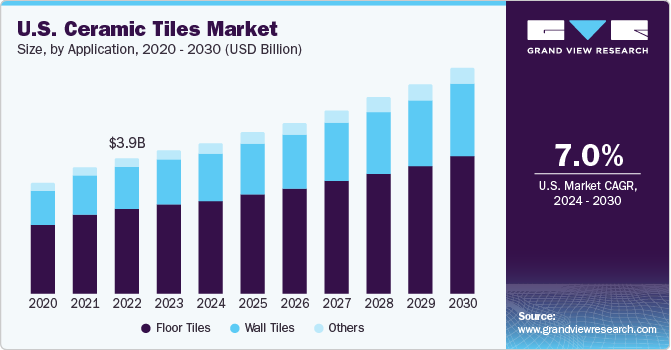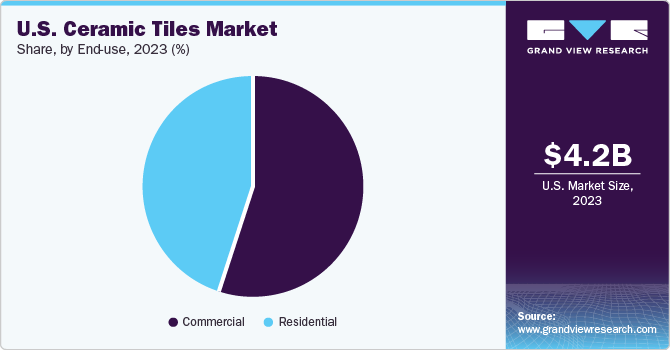
U.S. Tile Forecast 2025-2029
The U.S. Tile Installation Market: Challenges, Opportunities, and the Impact of New Home Construction
Key Takeaways
- Market Stability: The U.S. tile installation market is valued at $13.1 billion in 2024 and is expected to remain stable through 2028.
- Growth Factors: New home construction and commercial building projects are key drivers for the industry's growth.
- Challenges: High material costs and a shortage of skilled workers are significant hurdles.
- Opportunities: Advances in tile design and eco-friendly materials offer new possibilities.
- Future Outlook: The market is poised for modest growth despite economic pressures.
- Interest Rate Update: In late September, the Federal Reserve dropped interest rates by 50 basis points, offering a potential boost for residential construction and the tile installation market. More cuts may be coming, which could further stimulate demand.
1. Introduction to the Tile Installation Market
The tile installation industry is essential for creating durable and beautiful surfaces in homes and buildings. Tiles are not just practical; they add style and character to spaces like kitchens, bathrooms, and even outdoor areas. This industry has faced some tough times recently but is slowly getting back on its feet.

2. Market Size and Growth Trends
As of 2024, the U.S. tile installation market is worth about $13.1 billion. Over the past six years, it shrank a bit, but experts believe it will grow slightly in the next five years. This slow growth is happening even though things like high interest rates and inflation make it harder for people to build new homes. However, the recent Federal Reserve interest rate cut in late September 2024, reducing rates by 50 basis points, may ease financial pressures, encouraging more home construction.

3. What's the Industry Made Of?
There are over 66,000 businesses in the U.S. that install tiles. These companies work with different materials like ceramic tiles, mosaics, marble, and granite. The industry has a few main parts:
- Tile, Terrazzo, and Mosaic Contracting
- Marble, Granite, and Slate Contracting
- Other Construction Services
4. How Construction Activity Affects Tile Installation
The demand for tile installation is closely tied to how much building is going on. When more homes and commercial buildings are constructed, more tiles are needed. While building new homes has slowed down, commercial construction like offices and stores is picking up, which is good news for tile installers.

5. The Impact of Inflation and Supply Chain Issues
Inflation means that prices for materials like tiles and grout have gone up. Supply chain problems have made it harder to get these materials. This makes projects more expensive. However, these challenges are pushing the industry to find smarter ways to work and use materials more efficiently.

6. The Growth of the Ceramic Tile Market
Ceramic tiles are a big part of the market. Sales are expected to grow from $5.54 billion in 2024 to $6.40 billion by 2029. People love ceramic tiles because they're tough and come in many designs. New technology allows for more detailed and personalized tile designs, which is exciting for homeowners.

7. Sustainability and Eco-Friendly Materials
More people care about the environment now. Ceramic tiles are made from natural materials, making them a good choice for green building. There's also a trend toward "smart tiles" that have special features like surfaces that kill bacteria, which is especially useful in places like hospitals.

Equipped with advanced abatement filters, factories such as Lea Ceramiche’s now capture virtually all dust emissions, leaving the surrounding landscape relatively unscathed. Today, 99 per cent of the Italian industry’s production waste and water is also reused, with ceramic manufacturers going as far as utilizing discarded construction materials such as glass and brick to create their lines
8. Design Innovations in Tiles
Advancements in technology mean tiles can now mimic the look of wood or even come in very large sizes. These new designs allow tiles to be used in more places than just the bathroom or kitchen. They're becoming popular in living rooms and outdoor spaces too.
9. The Housing Market's Influence
The U.S. needs between 3 to 7 million new homes to meet demand. This shortage means more houses will be built in the future, which could greatly increase the need for tile installation. However, there aren't enough skilled tile installers, which could slow things down. The Federal Reserve's interest rate cut may help stimulate new home construction, offering a boost for the tile industry.

10. How New Homes Boost Tile Installation
When more new homes are built, it directly increases the demand for tiles. Builders need tiles for floors, walls, and other areas. This not only helps tile installers get more work but also can help the industry recover from recent declines.
11. Challenges Facing the Industry
Even with the opportunities, there are challenges. High material costs make projects more expensive. The lack of skilled workers means it's harder to meet demand. Also, changes in the housing market, like high interest rates, can make things uncertain. With the Federal Reserve cutting rates, however, there is a chance the housing market may pick up, helping alleviate some pressure on the industry.
12. Looking Ahead: The Future of Tile Installation
The future holds both promise and obstacles. Innovations in tile design and a focus on sustainability offer new opportunities. If the industry can overcome challenges like labor shortages and high costs, it can look forward to steady growth.
Frequently Asked Questions
Q1: Why are ceramic tiles becoming more popular?
A1: Ceramic tiles are durable, versatile, and now come in many designs thanks to new technology. They're also eco-friendly, which appeals to environmentally conscious consumers.
Q2: How does new home construction affect the tile industry?
A2: More new homes mean more need for tiles. This increases demand for tile installation services, benefiting the industry.
Q3: What challenges does the tile installation industry face?
A3: The industry faces high material costs, a shortage of skilled workers, and economic factors like inflation and high interest rates.
Q4: Are tiles being used in new ways?
A4: Yes, advances in design mean tiles are now used in living rooms, outdoor spaces, and more, not just in bathrooms and kitchens.
Q5: What opportunities exist for the tile industry?
A5: Growth in commercial construction, design innovations, and the push for sustainable materials offer new opportunities for the industry.

Leave a comment